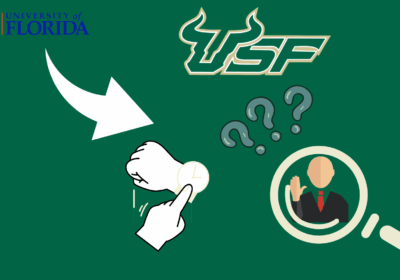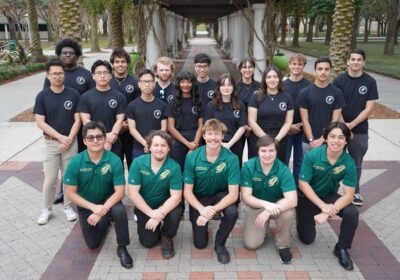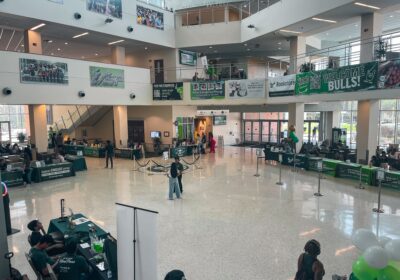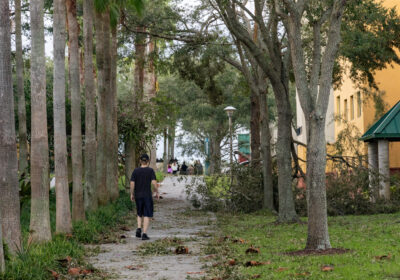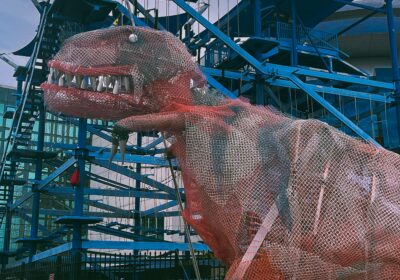Class learns from an ocean away

The JOIDES Resolution, a scientific drilling ship, has sailed off the coast of Japan since August. SPECIAL TO THE ORACLE
It’s ordinary for a geology professor to lecture about the finer points of volcanic rock, but not when the students sit in class and the professor sails over volcanoes in the Pacific Ocean.
Since Aug. 4, Chair of the School of Geosciences Jeff Ryan has sailed off the coast of Japan on the JOIDES Resolution, a scientific drilling ship. While aboard the ship, Ryan taught students in the Solid Earth geology class through videoconference.
The boat docked in Taiwan on Sept. 29. Ryan said he will return to Tampa soon.
His research team was studying the earth’s tectonic plates in areas called subduction zones, where volcanoes form after plates slide beneath one another, to better understand the process of volcanic eruptions.
“All of the really nasty stuff the Earth does to us tends to happen there,” he said. “The big volcanic eruptions that explode and cause devastation, the giant earthquakes, are all subduction zone phenomena.”
Through videoconference, Ryan lectured the class three times throughout the semester.
Zachary Atlas, a research assistant professor and the primary instructor for the class, said the students have taken a virtual tour of the boat and watched a real-time analysis of unclassified rocks.
“(Students) get to see how this really works on a professional level,” Atlas said. “Here (Ryan) is doing what we’re teaching them to do, on a real project for a real purpose and for real science. This is the real deal.”
Despite over 30 years of experience in the field of geology, Ryan said he still encountered some surprises and new adventures on the ship.
“The sheer scale of it was something I was not expecting. It’s a big-time operation. It’s like a dance,” he said. “Every time a new core (from beneath the seafloor) comes up, there’s a shout on deck, ‘Core on deck,’ and everybody heads to where the core is brought up to see what the heck it is, because everything we bring up is brand new.”
Though theirs was not a particularly dangerous mission, the team still narrowly avoided a hurricane that followed them throughout most of the trip.
Repurposing a piece of mining technology already on the boat, Ryan created a new methodology for studying never-before-seen pieces of earth that he gathered over 4,000 observations.
“It’s kind of like space science because you have to come up with new and innovative ways to solve these problems,” he said.
And for those not concerned with the nuisances of geology, Ryan said understanding how the earth’s crust is composed can help people better predict its chaotic nature.
“We can predict these kinds of catastrophic events and get ahead of them,” he said.
Ryan and Atlas both said they hope students will take part in future work.
Some of the samples Ryan brings back will be used in class labs and students will analyze thin sections of rock using microscopes.
Because the samples are new to the scientific community, Atlas said it’s not unheard of for a student to make a discovery that they could then use for a thesis.
Students who watched Ryan said they enjoyed the applied, hands-on approach to learning in class.
“I find, on a small level, analyzing things is very cool,” said Danielle Kaminzky, a senior majoring in environmental science.
Students also said they appreciated the opportunity to catch a glimpse of their potential career futures.
“I’m really jealous, I wish I was out in the field with him,” said Robert Hunter, a senior majoring in interdisciplinary
sciences.


